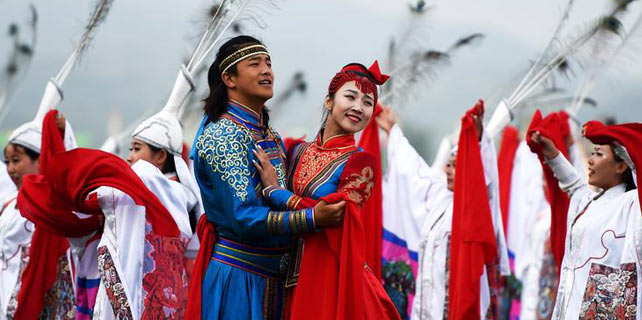Promoting another side
Mainland travelers are now paying more attention to other aspects of Hong Kong - its natural beauty, cuisine and culture, rather than just shopping, thanks to a new drive by the authorities. Xu Lin reports.
A group of people are lying on the reefs of Shek O, a beachside town in Hong Kong, looking up at the starry sky. Suddenly a meteor shower starts to fall, and cheers break out.
It is one of the memories of Kang Hui and his wife who moved from Beijing to Hong Kong in December.
The couple like to explore the island on weekends and write about their experiences on tourism website mafengwo.cn.
"Hong Kong is an inclusive city, where you can experience both Chinese and Western cultures," says Kang, 31.
Together with their colleagues, the couple regularly climb mountains, go to the seaside and do cycling and kayaking.
They also go to exhibitions and concerts, including the annual Art Basel fair.
"Less than 25 percent of Hong Kong's land is developed, and the total area of its parks and nature reserves account for about 40 percent. Also, it's convenient and cheap to take public transport to picturesque offshore islands, where you can go hiking," he says.
Hong Kong's tourism industry has not done well in recent years but it is recovering. And the island and its tourism partners are working hard to promote its tourism resources.
As a result, Chinese mainland travelers are now paying more attention to other aspects of Hong Kong - its natural beauty, cuisine and unique culture, rather than just shopping.
Kang also says that Chinese mainland tourists are now visiting places that are not regular scenic spots, and he has a few recommendations.
He says tourists can stroll around the Central district without a map, taking the long Central-Mid-Levels escalator and walkway system and immerse themselves in the old streets lined with small shops and restaurants.
The Dragon's Back is the best hiking trail for both green hands and veterans, with magnificent views of Shek O, Tai Long Wan, Stanley, Tai Tam, and the South China Sea, he adds.
Visitors can also take a bus to the hillside for sightseeing, walk to the seaside and then go to Shek O town.
As for Lantau Island, they can take a cable car to the mountain top and take a bus to Tai O village to experience the ancient fishing culture, he says.
"There, you can sample authentic food from all over the world - from street food to Michelin restaurants. But it is better to make a reservation," says Kang.
Commenting on how Hong Kong is seen now, Feng Rao, head of the travel research center of mafengwo.cn says: "Shopping is not the prime aim of Chinese mainland travelers anymore."
Meanwhile, official data shows that in the first half of 2017, about 20.9 million tourists from the mainland visited Hong Kong, accounting for 75 percent of the island's inbound tourism market.
And, mafengwo.cn says that in July and August, the number of those who were interested in traveling to Hong Kong increased by about 65 percent, compared with the same period last year.
In August, the National Tourism Administration and the Hong Kong Special Administrative Region government signed an agreement to develop tourism products.
Feng says that the mafengwo.cn analysis was based on travel notes and tips from the website's users, and although the keyword for Hong Kong tourism is still "shopping", users are now paying more attention to leisure and entertainment.
He says Cheung Chau, Lamma Island and Shek O are the most popular offshore island destinations in Hong Kong. And that some tourists travel there because they feature in Hong Kong TV series and movies.
According to him, the new trend for Hong Kong tourism is exploration of the island's culture. Also, the website's users are now interested in how to integrate into local life - such as enjoying delicious street food in Mong Kok.
Zhao Huan, the public relations manager of the online travel agency tuniu.com, says: "Our partners and we are focusing on Hong Kong culture to draw more tourists."
She says that tourists are now interested in cycling and fishing at night, and culinary culture is always a favorite.
The online travel agency, Ctrip, has developed several itineraries related to Hong Kong's culture and history.
The Central district itinerary allows visitors to experience Chinese and Western cultures, where old streets coexist with skyscrapers.
Also, it has a customized itinerary for fans of Chinese author Eileen Chang (1920-95), who studied at the University of Hong Kong.
Zhao Xuepeng, who is in charge of Ctrip's tourism business in Hong Kong, says: "Besides shopping malls, tourism operators are now offering customized services for Chinese mainland travelers such as hiking on offshore islands."
Contact the writer at xulin@chinadaily.com.cn
(China Daily 09/18/2017 page22)




















